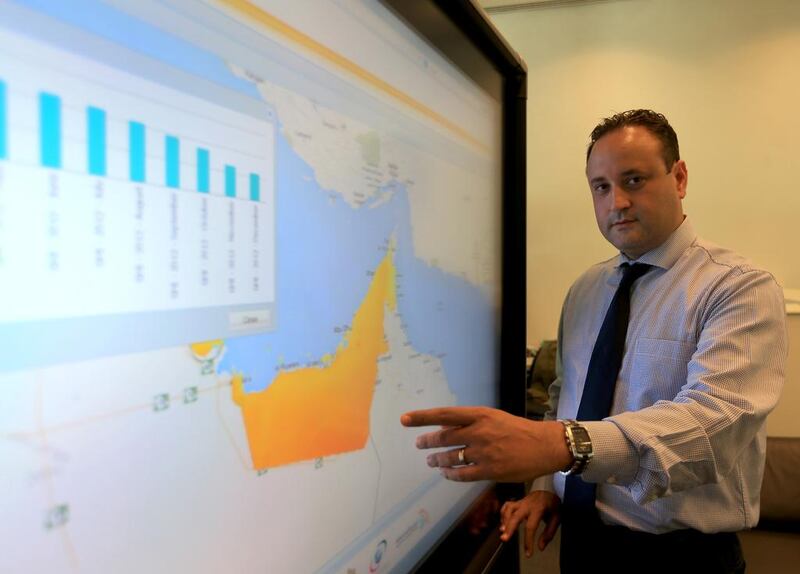ABU DHABI // A centre in Masdar is seeking to assess renewable energy available in the UAE and help the country achieve its full potential in sustainable living.
The Research Centre for Renewable Energy Mapping and Assessment was opened three years ago to measure solar radiation on the ground and collect accurate data.
Dr Hosni Ghedira, director of the centre, said that when the Government set its target of 7 per cent for renewables’ share of energy use, the first step was to measure the amount of sun and wind that could be harnessed.
“We’ve been developing this expertise for the past three years and the centre is now becoming a global leader in renewable energy assessment in desert and arid environments,” Dr Ghedira said.
Two years before that, a consultant had been brought in to conduct an initial assessment of solar radiation levels.
“But we found out that the number was overestimated because [the instruments] were not adapted to the climate,” Dr Ghedira said.
“So they underestimated the dust – we have a very dusty environment here unlike Europe or the US – and these dusty conditions affect solar resources and the performance of the panels.”
Solar panels in the region must be cleaned more often than in other countries.
“So we proposed to the Government to build up capacity here and create this research centre that focuses more on solar resource assessment in dusty and desert environments,” Dr Ghedira said.
“Our strength is that we understand our climate, so we recalibrated different algorithms and models that are used by the scientific community to measure solar radiation, and we adapted them to the climate here. We also added the dust component and the hot environment.”
Seventeen scientists work on solar technology, atmospheric science, remote sensing and earth observation, which includes finding out how this data can be used to recalibrate and assess solar equipment.
“We proposed new models and now we’re extending our scope to the whole region,” Dr Ghedira said.
“We’re working with Saudi Arabia, too, and 60 per cent of our staff is there now.”
The findings are vital for investors in solar energy.
“We assess the real outcome in terms of power performance, how many kilowatts an hour you can produce, and without those maps and the initial assessment of solar radiation that you have in the ground, you can’t have an accurate assessment of solar potential or projection in terms of investments,” Dr Ghedira said.
Because of frequent dust storms in the UAE, solar radiation can lose up to 80 per cent of its potential.
“We’re integrating this information in our simulation under different climate conditions and we’re using this to forecast,” Dr Ghedira said.
“The industry is demanding how we can estimate what will be the projection tomorrow so we have a team of forecasters who work on meteorological data, forecasting dust-cloud movement, how it affects solar performance and to estimate the power output.”
This can also help to select technology that is least affected by high temperature and dust.
“This region is becoming the centre of renewable energy implementation,” he added. “In the UAE, Kuwait and Saudi Arabia, especially, we look at areas with less exposure to dust, closer to the grid connection and we produce that information for investors.”
Saima Munawwar, a Phd graduate in solar energy, is one of seven students working at the centre.
“I saw that was where the future was and so far, we can see at least in this part of the region that people are more and more interested in renewable energy and they’re investing as well,” Ms Munawwar said.
“My main field is solar resource investment. I work with ground measurements for solar radiation and I analyse the data so we’re finding out the potential of the resource in the region.
“What keeps you going is that, in the end, you’ll have decent results that you can publish.”
cmalek@thenational.ae





